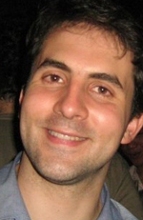Center for Public Integrity Wins October Sidney Award for Investigating International Medical Mystery
Sasha Chavkin, Anna Maria Barry-Jester and Ronnie Greene of the Center for Public Integrity won the October Sidney Award for “Mystery in the Fields,” an international investigation into a mystery kidney disease killing young farm workers in India, Sri Lanka, and Central America.
In north central Sri Lanka, where the disease strikes 15% of the population, Buddhist monks donate kidneys to strangers. An island in Nicaragua is known as the Island of the Widows because so many of its young men have died.
The mystery disease, dubbed CKDu for Chronic Kidney Disease of Unspecified Origin, is killing more people than diabetes, HIV/AIDS and leukemia combined. More than 16,000 men have died from CKDu between 2005 and 2009.
The victims are typically young male farmworkers doing backbreaking work in very hot weather, young men like Maudiel Martinez of Nicaragua, who developed CKDu at the age of 17, after working in the sugarcane fields for three years. His father also died of the disease.
The World Health Organization blames heavy metal poisoning, likely from food, but many independent experts suspect that CKDu is a work-related illness caused by the deadly combination of pesticides and backbreaking labor in the heat.
Sasha Chavkin is an investigative reporter based in New York City. He is currently covering political advertising in the 2012 elections in “The Ad Wars,” a regular column for the Columbia Journalism Review. He has previously written for ProPublica and The New York World.
Anna Maria Barry-Jester is a multimedia journalist based in New Delhi, India. She previously worked as a producer for an award-winning global health series at ABC News. She holds a Master of Public Health from Columbia University. She has been researching and documenting chronic kidney disease since 2008.
Ronnie Greene is a senior investigative reporter and editor with The Center for Public Integrity. Earlier this month, he received an Emmy Award for his investigation, produced in partnership with ABC News, into the U.S. government’s green energy spending. Before joining the Center, he was The Miami Herald’s investigations and government editor; his last Herald project, Neglected to Death, was a Pulitzer Prize Finalist for Public Service.
Backstory
- How did you become aware that a mysterious kidney disease was killing agricultural workers?
We first found out about this disease affecting one sugar plantation in Nicaragua. A large number of the workers were dying of kidney failure and no one could find its cause. A lawyer who was representing the workers told me about their situation – in one community so many men had died of kidney disease that instead of being called La Isla, The Island, it was referred to as the Island of Widows. From reporting on that story it became clear that this wasn’t just happening in one place. It was occurring all along the Pacific Coast of Central America, and as we learned later, the same kind of disease was affecting eastern India and Sri Lanka as well.
- This was a wide-reaching investigation across multiple countries. Can you describe your strategy for reporting this piece?
There were two main challenges in this story: trying to figure out the mystery of what is causing the disease, and telling the stories of the people who are suffering from the disease. The difficulty in investigating the cause is that there are a lot of theories out there, which are backed up by varying amounts of evidence. We spoke to many scientists with different perspectives on this disease, and tried to assess which theories were the most plausible and had the best research to back them up.
We also travelled to the places that were hardest hit by the epidemic and followed the individuals who were suffering from it, who do not speak English and often don’t express emotion or talk about personal thoughts the way that many Americans do. These were mostly young and middle aged men who had been breadwinners for most of their lives, sometimes from shockingly young ages. All of sudden they were terribly ill, unable to work, and often didn’t have long to live – and they had responses that varied from anger to resignation to one man who didn’t even tell his wife and children the seriousness of the disease because he didn’t want them to share in his suffering.
- This is a medical mystery with political dimensions. Describe the vested interests shaping the response to the CKDu epidemic.
In two of the affected areas – Central America and Sri Lanka – this disease posed a threat to major agribusinesses that didn’t want to see people rocking the boat about their practices. In Central America, the disease has largely affected sugarcane workers, and scientists have found that extreme heat and the exertion of their jobs causes dehydration that damages the kidneys. The sugar industry has fought fiercely to prevent this from being classified as an occupational disease, and insists that it has nothing to do with their labor practices.
In every place the disease is occurring, the evidence suggests that an unknown toxic exposure is also a crucial factor. In Sri Lanka, the health ministry and World Health Organization recently said their research had found that the heavy metals cadmium and arsenic were key culprits, but they have yet to provide evidence to back that up. The likeliest sources of cadmium and arsenic are fertilizers and pesticides. The agribusiness industry in Sri Lanka insists that their agrochemicals are safe and abide by regulations, and have strongly criticized scientists who said otherwise.
- The disease strikes in sharply defined pockets or belts, leaving farmworkers doing similar jobs in nearby areas unaffected. Why do you think that is?
The evidence suggests that a toxic exposure is causing this disease – which would mean that the areas where the toxin is present are at risk. The key piece of evidence for this is that everywhere the epidemic is occurring, workers are suffering from a rare type of kidney damage called tubulo-interstitial disease. Tubulo-interstitial disease is consistent with toxic poisoning and severe dehydration, and not with diabetes or hypertension, which are the most common causes of chronic kidney disease.
- CPI used Kickstarter to help fund the project. Can you say a bit about that process? Was this your first foray into this kind of fundraising?
It was the first time using Kickstarter both for me and for CPI. We thought this would be a good project to work with because we had already done a story about this disease in Central America, and felt that gave us added credibility to fundraise for this project. Both Anna Barry-Jester and I have been reporting on this problem for several years. We felt that if we could communicate how urgent and how neglected this epidemic is, that we hopefully could get people to invest in our project and more broadly in informing the world about this problem.
- Was there anything you wanted to include in the story that you had to leave out?
One issue that I wished we could have mentioned is the future outlook for this disease, particularly as it relates to climate change. The best evidence we have to date suggests that some combination of a toxic exposure and chronic dehydration from working in extreme heat are key causes of this illness. If the climate is getting hotter, that means that more people could be at risk in the same kinds of areas we’ve seen affected so far – rural communities where a large part of the population is engaged in manual labor in the fields.




